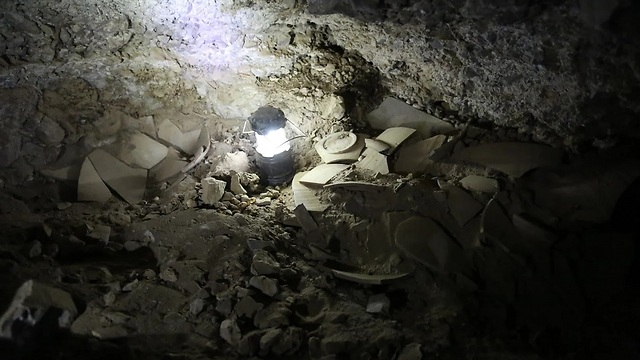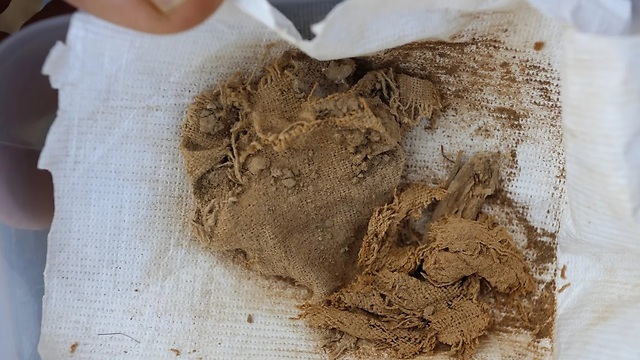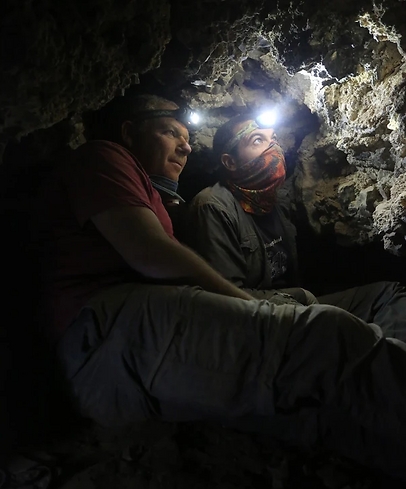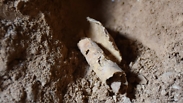
New evidence from the Dead Sea Scrolls found
In a newly excavated cave in the Judean desert, pottery fragments dated to the Second Temple were found, as well as dozens of olive pits, dates and even entire nuts.
The excavation was led by Dr. Oren Gutfeld from the Hebrew University in Jerusalem, assisted by Dr. Randall Price and students from Liberty University in Virginia. The cave was discovered at the beginning of the 90s during an extended archeological review conducted by the Israel Antiquities Authority, titled Operation Scroll. Its purpose was to locate additional scrolls in the Qumran caves in the Judean desert.
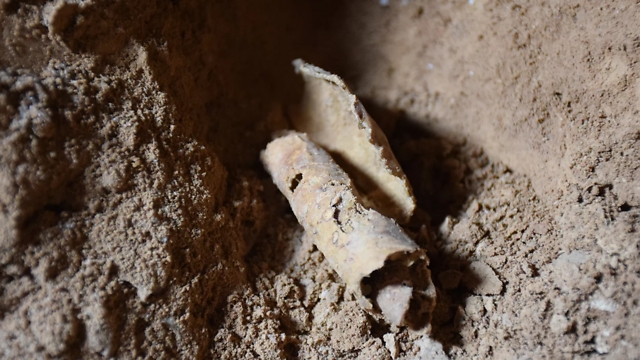
The scrolls robbery of the Qumran caves started in 1947, the year in which the first scrolls were discovered. Only in the early 50s, however, were orderly archeological excavations conducted in Qumran by Roland de Vaux of the French school of the French Catholic Theological School in Jerusalem and Gerald Harding, then-director of the Department of Antiquities of Jordan. To this day, only a small number of scroll fragments were found in the organized archeological digs.
The current excavation was conducted throughout January. It is a relatively small cave (approximately 3.5X5 meters) with a narrow entrance on its southern wall. The findings from the surface of the cave date back to the Second Temple, and included clay fragments from pots and bowls, which were used as lids for the pots, but mostly, multiple organic findings, which were well preserved due to the arid climate in the area.
Among the organic findings were dozens and dozens of olive pits, dates, various kinds of nuts, some whole nuts, which were left unshelled nuts, several thin ropes, bits of woven baskets, and a few pieces of fabric.
The interior of the cave was covered by a wicker bed of palm and thin brush branches, which were used by the dwellers of the cave as a kind of mat. Once the first stratum was removed, findings from the Chalcolithic period were uncovered (5th century BC), as well as the Cermaic Neolithic and the pre-Neolithic period (8th-9th centuries BC)—mainly pottery and flint tools, including arrow heads, various blades and an complete seal made of red Carnelian stone.
Within the fragments of the jar, a piece of leather was found rolled three times.
The finding has generated a lot of buzz, as no new evidence of scrolls have been found in over 60 years, and even then, most of the scrolls were found outside of jars as opposed to within.
The rolled-up piece of leather was carefully collected and transported to an archaeological conservation laboratory at The Hebrew University of Jerusalem. From there, the scroll was transported to another conservation laboratory under the auspices of the Israel Antiquities Authority.
Tests have revealed that the scroll was empty and was most likely in the process of being prepared to be written on.
Dr. Oren Gutfeld, an archeologist and project leader at Hebrew University said, "This is one of the most exciting and important discoveries of the last 60 years at the Qumran caves. These findings confirm without a doubt that this was the 12th cave that scrolls were buried in during the time of the Second Temple. Unfortunately, many scrolls were stolen by Bedouins during the 1940s and 1950s. However, these findings are important and extremely fascinating and demonstrate the need to promote the excavation of caves in the Judean Desert."










